Crescent Sustainability Initiatives
Affordable and Clean Energy (SDG 7)
Foundational Insights from the Energy Audit
The energy audit conducted at B.S. Abdur Rahman Crescent Institute of Science and Technology has laid a robust foundation for an energy efficiency plan aimed at significantly reducing overall energy consumption on campus. The audit identified key areas where energy savings can be achieved, amounting to an annual savings potential of 487,014 kWh, which translates to a cost saving of approximately Rs. 40,11,685/- (Rupees Forty Lakh Eleven Thousand Six Hundred and Eighty-Five only). The proposed investment for implementing various energy conservation measures (ECMs) is estimated at Rs. 1,59,50,000/- (Rupees One Crore Fifty Nine Lakh Fifty Thousand only), with an average payback period of 48 months. This structured approach not only emphasizes immediate cost savings but also aligns with the institution’s commitment to sustainability and renewable energy.
Actionable Measures for Energy Conservation
The energy efficiency plan encompasses a range of actionable measures, including the replacement of Fluorescent Tube Lamps (FTL) with energy-efficient LED lamps, which alone can save 19,200 kWh annually. Other significant initiatives include rectifying solar water heaters in the ladies’ hostel, upgrading existing air conditioning units to 5-star rated split ACs, and replacing conventional ceiling fans with energy-efficient Brushless DC electric motor fans. Each of these measures has been meticulously calculated to ensure substantial reductions in energy consumption while maintaining comfort and operational efficiency across the campus facilities.
Enhancing Energy Management Through Monitoring
Additionally, the audit highlights the importance of monitoring and controlling energy usage through the installation of dedicated energy meters and a demand controller. These systems will provide real-time data on energy consumption, enabling the management to make informed decisions about energy usage patterns and identify further opportunities for savings. By actively managing demand and optimizing energy consumption, the institute can avoid penalties associated with exceeding contract demand, thereby enhancing overall financial efficiency.
Towards a Sustainable Future: A Commitment to Energy Efficiency
In conclusion, the energy efficiency plan at Crescent Institute is a comprehensive strategy that not only aims to reduce energy consumption but also fosters a culture of sustainability within the campus community. By implementing these measures, the institute is poised to make significant strides toward achieving its renewable energy goals while setting a benchmark for energy efficiency in educational institutions across the region. The commitment to continuous improvement and innovation in energy management will ultimately contribute to a greener and more sustainable future for the institute and its stakeholders.
The energy audit report for Crescent Institute of Science & Technology conducted by SLR Industrial Solutions provides a comprehensive analysis of energy consumption and identifies areas of energy waste. Here’s a synthesized summary based on the report, focusing on energy wastage identification:
| The copy of the complete report is available in the following web link : Energy Wastage Identification Report |
The gist of the Audit Report is provided in the following sections.
Summary of Energy Waste Identification
- Overall Energy Consumption:
- The total annual energy consumption is approximately 4,083,312 kWh, with significant contributions from air conditioning (54%), fans (14%), and lighting (8%).
- The electricity bill amounts to Rs. 4,26,70,284 annually, indicating a high operational cost due to energy consumption.
- Key Areas of Energy Waste:
- Air Conditioning: The audit highlights that the air conditioning systems are a major source of energy consumption. Recommendations include maintaining set temperatures above 24°C and replacing old window AC units with energy-efficient 5-star rated split ACs.
- Lighting: While 70% of lamps have been replaced with LED lights, there are still areas, such as the Men’s hostel and Canteen, where fluorescent tube lamps (FTLs) are in use. Replacing these with LEDs could save significant energy.
Table VII (2.5) – 1: 70% lamps are replaced with LED lamps to reduce energy consumption
SL NO | BUILDING | QTY | TOTAL WATTS | Operating Hours/day | kWh/day |
1 | AUDITORIUM | 206 | 4487 | 8 | 36 |
2 | SCIENCE BLOCK | 435 | 5684 | 12 | 68 |
3 | AERO BLOCK | 573 | 6964 | 12 | 84 |
4 | MAIN BLOCK | 382 | 6252 | 12 | 75 |
5 | MBA BLOCK | 123 | 2597 | 12 | 31 |
6 | FIRST YEAR BLOCK | 217 | 4305 | 12 | 52 |
7 | LIFE SCIENCE BLOCK | 108 | 2828 | 12 | 34 |
8 | NEW STAFF QUARTERS | 383 | 5135 | 12 | 62 |
9 | LADIES HOSTEL | 664 | 8359 | 12 | 100 |
10 | CAMPUS STREET LIGHT | 286 | 8570 | 12 | 103 |
11 | MEDICAL | 35 | 589 | 12 | 7 |
12 | PHARMACY | 143 | 2575 | 12 | 31 |
13 | GM OFFICE | 47 | 910 | 8 | 7 |
14 | MAIN CANTEEN | 45 | 1042 | 12 | 13 |
15 | VC OFFICE | 100 | 620 | 8 | 5 |
16 | VC VILLA | 51 | 571 | 12 | 7 |
17 | GUEST HOUSE | 37 | 680 | 12 | 8 |
18 | DRIVERS CABIN | 8 | 120 | 12 | 1 |
19 | OLD STAFF QUARTERS | 53 | 1005 | 12 | 12 |
20 | SPORTS LIGHTING | 64 | 12800 | 8 | 102 |
21 | HR OFFICE | 27 | 500 | 8 | 4 |
22 | PARANTS WAITING HALL | 12 | 166 | 8 | 1 |
24 | NEW ARCHITECTURE BLOCK | 614 | 10808 | 12 | 130 |
25 | CIVIL YARD CLASS ROOMS | 40 | 650 | 12 | 8 |
26 | CSB ROOM MENS HOSTEL | 47 | 780 | 12 | 9 |
27 | ROBOTICS LAB | 22 | 280 | 12 | 3 |
28 | RESEARCH SCHOLAR ROOM CHEMISTRY | 4 | 144 | 12 | 2 |
29 | FOOD WASTE MANAGEMENT PLANT | 26 | 640 | 12 | 8 |
30 | SOLAR STREET LIGHT | 10 | 250 | 12 | 3 |
31 | MENS HOSTEL | 1007 | 13219 | 12 | 159 |
32 | MBA PHASE 1 | 49 | 595 | 12 | 7 |
33 | MBA PHASE 2 | 170 | 3108 | 12 | 37 |
34 | COMPUTER SCIENCE LAB | 51 | 690 | 12 | 8 |
35 | PURCHASE OFFICE (EO) | 2 | 30 | 8 | 0 |
36 | CIIC BLOCK | 328 | 5479 | 12 | 66 |
37 | CIIC 2ND FLOOR STUDIO | 13 | 225 | 12 | 3 |
38 | DRAWING HALLS & LABS(MECH) | 60 | 709 | 12 | 9 |
39 | CANTEENS | 119 | 1984 | 12 | 24 |
40 | OUTDOOR LIGHTING | 63 | 1306 | 12 | 16 |
TOTAL | 6624 | 117,656 |
| 1,334 | |
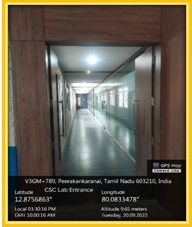
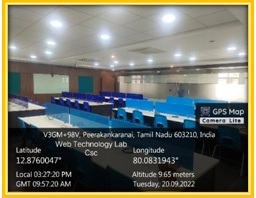
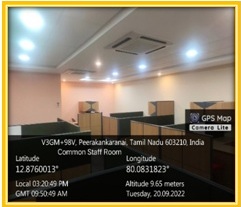
Figure VII (2.5) – 1 : Geotag photos documenting the installation of LED lamps in the CSE Lab entrance, Web Technology Lab, and Common Staff Room.
Pumps and Blowers: The existing pumps are noted to be old and inefficient. The report suggests replacing them with energy-efficient models to reduce power consumption. Similarly, the STP blowers are recommended for replacement with more efficient tri-lobe blowers.
3. Renewable Energy Utilization:
- The report indicates that the solar water heaters in the ladies’ hostel are not operational, leading to reliance on electric heaters. Rectifying these systems could reduce energy waste.
- The solar rooftop panels are underperforming due to some panels being non-functional. Addressing these issues could enhance energy generation and reduce dependency on grid electricity.

Figure VII (2.5) – 2 : Geotag photos documenting the installation of Solar Panel in KBA Men’s Hostel, Ladies Hostel and Staff Quarters.
4. Demand Management:
- The report identifies that the maximum recorded demand has exceeded the contract demand, leading to demand penalties. Implementing a demand controller could help manage peak loads and avoid penalties.
5. Energy Conservation Measures (ECMs):
- The audit outlines several ECMs with potential savings:
- Replace FTLs with LEDs: Estimated savings of 19,200 kWh annually.
- Rectify solar water heaters: Potential savings of 20,930 kWh annually.
- Replace old ACs with energy-efficient models: Estimated savings of 45,000 kWh annually.
- Install demand controllers: Savings of 21,120 kWh annually.
- The audit outlines several ECMs with potential savings:
6. Financial Implications:
The total proposed investment for implementing the recommended measures is Rs. 1,59,50,000/- (Rupees One Crore, Fifty Nine Lakhs, Fifty Thousand only) , with an overall payback period of approximately 48 months. The total annual savings from these measures could reach Rs. 40,11,685 (Rupees Forty Lakhs Eleven Thousand Six Hundred and Eighty Five only).
Table VII (2.5) – 2: Executive Summary : Financial Implications
ECM. No | Energy Conservation Measures | Annual Savings | Investment | Payback | |
| kWh | Rs. | Rs. | Months | ||
| Short-Term Payback | |||||
| 1 | Replace FTL Lamps with LED and reduce power consumption | 19,200 | 180,480 | 120,000 | 8 |
| 2 | Rectify solar water heater in ladies hostel and reduce power consumption | 20,930 | 196,744 | 180,000 | 11 |
| 3 | Replace existing STP blower with new energy efficient blower | 25,810 | 242,615 | 250,000 | 12 |
Medium-Term Payback | |||||
| 4 | Rectify Solar roof top panel problem and increase power generation | 8,040 | 61,506 | 100,000 | 20 |
| 5 | Install Demand Controller to avoid demand penalty charges | 21,120 | 40,000 | 23 | |
Long-Term Payback | |||||
| 6 | Replace conventional ceiling fans with BLDC fans | 37,800 | 355,320 | 1,050,000 | 35 |
| 7 | Replace old AC with Energy Efficient 5 star rated split AC | 45,000 | 423,000 | 1,500,000 | 43 |
| 8 | Replace main block water pump with new one and reduce power consumption | 1,320 | 12,408 | 50,000 | 48 |
| 9 | Replace street light with solar power light and reduce power consumption | 1,314 | 12,352 | 60,000 | 58 |
| 10 | Explore roof top solar PV possibility to generate electrical energy | 327,600 | 2,506,140 | 12,600,000 | 60 |
Annual
| Total Savings & Investment and Average Payback
| 487,014 | 4,011,685 | 15,950,000 | 48 |
| Total kWh Savings in Percentage : 10 | |||||
| Total Cost Savings in Percentage : 9 | |||||
| Total CO2 reduction in Tons : 385 | |||||
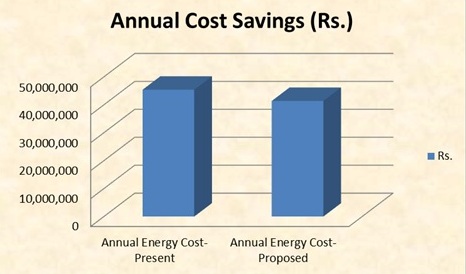
Figure VII (2.5) – 3 : Annual Cost Savings
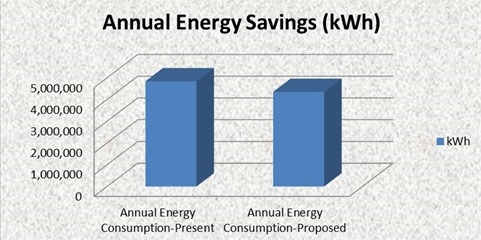
Figure VII (2.5) – 4 : Annual Energy Savings
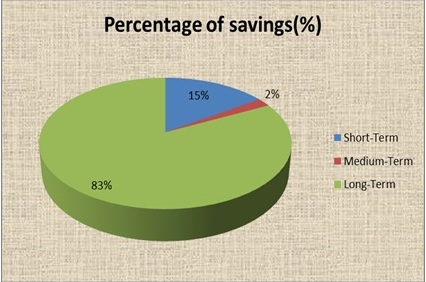
Figure VII (2.5) – 5 : Percentage of Savings
The energy audit report reveals significant opportunities for energy savings at Crescent Institute of Science & Technology. By focusing on the identified areas of high energy consumption, such as air conditioning, lighting, and inefficient pumps, and by implementing the recommended energy conservation measures, the institute can substantially reduce energy waste, lower operational costs, and enhance sustainability. Regular energy reviews and monitoring will be essential to track progress and ensure continued energy efficiency improvements.
POLICY FOR ENERGY-EFFICIENT RENOVATION AND BUILDING
Issue: 04; Revised on 2023
| Policy Created on | July 2009 |
| 1st Revision amended on | IQAC Meeting held on 27th October 2017 |
| 2nd Revision amended on | IQAC Meeting held on 31st March 2021 |
| 3rd Revision amended on | IQAC Meeting held on 16th June 2023 |
Responsible Executive : Director (IQAC)
Responsible Office : Internal Quality Assurance Cell, Estate Office, and SDG Cell
Contacts : Registrar, Director (IQAC)
The B.S. Abdur Rahman Crescent Institute of Science and Technology is committed to ensuring that all renovations and new constructions on campus adhere to stringent energy efficiency standards. This policy aims to:
- Ensure universal access to affordable, reliable, modern energy services.
- Increase substantially the share of renewable energy in the global energy mix.
- Double the global rate of improvement in energy efficiency
- Enhance international cooperation to facilitate access to clean energy research and technology.
- Expand infrastructure and upgrade technology to supply modern and sustainable energy services, particularly in developing countries.
7.2 REASON FOR THIS POLICY
This policy is established to promote energy-efficient practices in renovating existing infrastructures and constructing new buildings. By adhering to energy efficiency standards, the Institute aims to reduce greenhouse gas emissions, lower operational costs, and contribute to the global efforts to combat climate change, which aligns with SDG 7 – Affordable and Clean Energy.
7.3 RESPONSIBILITIES
7.3.1 Policy Principles
The Institute shall implement the following principles to ensure compliance with energy efficiency standards:
- All renovations and new constructions must achieve recognised building rating systems such as EDGE, IGBC, and LEED.
- Sustainable design features, including using renewable energy sources, shall be integrated into all projects.
- An efficient waste management plan shall be established to minimize waste and promote recycling.
- Rainwater harvesting systems shall be implemented in all new buildings.
- Energy conservation shall be prioritized through the installation of energy-efficient appliances and equipment.
- Regular audits of energy consumption shall be conducted to identify areas for improvement.
- Use of low VOC (Volatile Organic Compounds) materials in construction and renovation to minimize harmful emissions.
- Adoption of eco-friendly housekeeping practices using biodegradable chemicals.
- Implementation of high reflective roofing materials and green roofs to reduce heat island effects.
- Encourage water-efficient landscaping and high-efficiency irrigation technology in new construction projects.
- Support R&D activities towards energy-efficient renovation and building.
- Enhance national/international cooperation to facilitate access to green building technology.
- Dissemination of Policy
- Awareness programs shall be conducted regularly for all stakeholders regarding energy-efficient practices.
- This policy shall be publicly accessible on the Institute’s website and updated as necessary.
7.3.3 Enforcement of Policy
- The Director (Planning and Development) and their team are responsible for monitoring compliance with this policy.
- Compliance shall be communicated to architects, design engineers, and construction workers involved in projects.
7.2.1 – ENERGY EFFICIENCY POLICY.pdf
POLICY FOR DIVESTMENT FROM CARBON-INTENSIVE ENERGY INDUSTRIES
Issue: 04; Revised on 2023
| Policy Created on | July 2009 |
| 1st Revision amended on | IQAC Meeting held on 27th October 2017 |
| 2nd Revision amended on | IQAC Meeting held on 31st March 2021 |
| 3rd Revision amended on | IQAC Meeting held on 16th June 2023 |
Responsible Executive: Director (IQAC)
Responsible Office: Internal Quality Assurance Cell, Estate Office, and SDG Cell
Contacts: Registrar, Director (IQAC)
The B.S. Abdur Rahman Crescent Institute of Science and Technology is committed to divesting from carbon-intensive energy industries, particularly coal and oil, to promote sustainable energy practices and contribute to the global efforts to combat climate change. This policy aims to:
- Ensure universal access to affordable, reliable, and modern energy services.
- Increase substantially the share of renewable energy in the global energy mix.
- Double the global rate of improvement in energy efficiency.
- Enhance international cooperation to facilitate access to clean energy research and technology.
- Promote investment in energy infrastructure and clean energy technology.
7.2 REASON FOR THIS POLICY
This policy is established to minimize the Institute’s carbon footprint by reducing investments in fossil fuels and promoting renewable energy sources. By divesting from carbon-intensive industries, the Institute aligns with the United Nations’ Sustainable Development Goals, particularly SDG 7: Affordable and Clean Energy, and supports the transition to a sustainable energy future.
7.3 RESPONSIBILITIES
7.3.1 Policy Principles
The Institute shall implement the following principles to ensure effective divestment from carbon-intensive energy industries:
- Conduct a comprehensive review of current investments to identify carbon-intensive assets.
- Gradually divest from all investments in coal and oil industries within a specified timeframe.
- Reallocate funds towards renewable energy projects and sustainable technologies.
- Collaborate with financial institutions that prioritize sustainable investment practices.
- Promote transparency in investment decisions and publicly report on divestment progress.
- Engage with stakeholders, including students and faculty, to raise awareness about the importance of divestment from fossil fuels.
- Support research and development initiatives focused on clean energy technologies.
7.3.2 Dissemination of Policy
- This policy shall be publicly accessible on the Institute’s website to ensure transparency.
- Awareness programs shall be conducted regularly for all stakeholders regarding the importance of divestment from carbon-intensive industries.
- Updates on divestment progress shall be communicated through newsletters and reports.
7.3.3 Enforcement of Policy
- The Director (Finance) and their team are responsible for monitoring compliance with this policy and reporting on divestment progress.
- Any breach of this policy may result in a review of investment strategies and potential disciplinary actions as prescribed by the Institute’s code of conduct.


